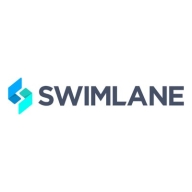

ServiceNow Security Operations and Swimlane are competing in the cybersecurity solutions category. ServiceNow is favored for its comprehensive features and integration capability, while Swimlane gains an edge with its focus on automation.
Features: ServiceNow Security Operations is noted for its incident response capabilities, threat intelligence integration, and workflow automation. It supports environments using multiple security tools seamlessly. Swimlane is distinguished by its advanced security orchestration and automation features, enhancing efficiency in large-scale environments. Its scalability and automated workflows provide streamlined security processes.
Ease of Deployment and Customer Service: ServiceNow Security Operations offers seamless integration into existing IT infrastructures and robust customer support. Swimlane provides a flexible deployment model, accommodating both on-premise and cloud solutions, along with proactive customer service. ServiceNow's integration features provide benefits, but Swimlane's adaptable deployment options and customer service offer a significant advantage.
Pricing and ROI: ServiceNow Security Operations has higher initial setup costs, which are justified by a promising long-term ROI due to its extensive features and integrations. Swimlane offers a competitive pricing model with lower setup costs and notable ROI through its efficient automation capabilities. Swimlane's cost efficiency appeals to businesses prioritizing automation without high upfront expenses.
| Product | Market Share (%) |
|---|---|
| ServiceNow Security Operations | 3.5% |
| Swimlane | 3.2% |
| Other | 93.3% |


| Company Size | Count |
|---|---|
| Small Business | 6 |
| Midsize Enterprise | 2 |
| Large Enterprise | 15 |
| Company Size | Count |
|---|---|
| Small Business | 2 |
| Midsize Enterprise | 1 |
| Large Enterprise | 5 |
ServiceNow Security Operations is a cutting-edge security solution designed to elevate organizations' security incident response (SIR) processes through automation and orchestration. Going beyond traditional SOAR, this comprehensive Security Operations Suite integrates seamlessly with other ServiceNow products and offers a wide array of features. Its components include Security Incident Response (SIR), which automates incident workflows and offers pre-built playbooks; Security Configuration Compliance (SCC), continuously scanning and automating compliance tasks; Vulnerability Response (VR), prioritizing and remediating vulnerabilities; Threat Intelligence (TI), aggregating threat data for proactive threat hunting; and additional features like IT Service Management integration, Machine Learning and AI, reporting, and a mobile app. The benefits span improved incident response speed, reduced mean time to resolution, increased security posture, enhanced compliance, collaborative synergy between security and IT teams, and operational cost reductions.
Swimlane is a leader in security orchestration, automation and response (SOAR). By automating time-intensive, manual processes and operational workflows and delivering powerful, consolidated analytics, real time dashboards and reporting from across your security infrastructure, Swimlane maximizes the incident response capabilities of over-burdened and understaffed security operations.
Swimlane was founded to deliver scalable innovative and flexible security solutions to organizations struggling with alert fatigue, vendor proliferation and chronic staffing shortages. Swimlane is at the forefront of the growing market for security automation and orchestration solutions that automate and organize security processes in repeatable ways to get the most out of available resources and accelerate incident response.
We monitor all Security Orchestration Automation and Response (SOAR) reviews to prevent fraudulent reviews and keep review quality high. We do not post reviews by company employees or direct competitors. We validate each review for authenticity via cross-reference with LinkedIn, and personal follow-up with the reviewer when necessary.